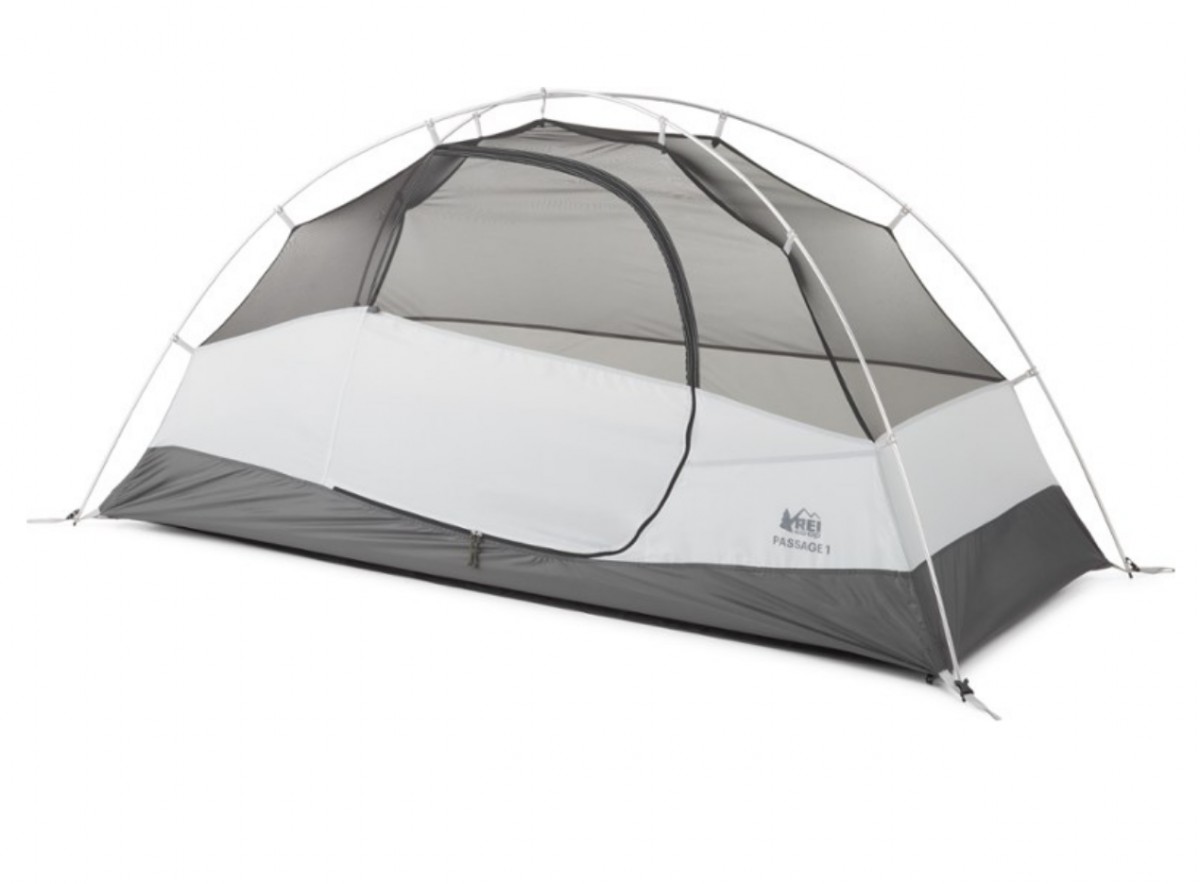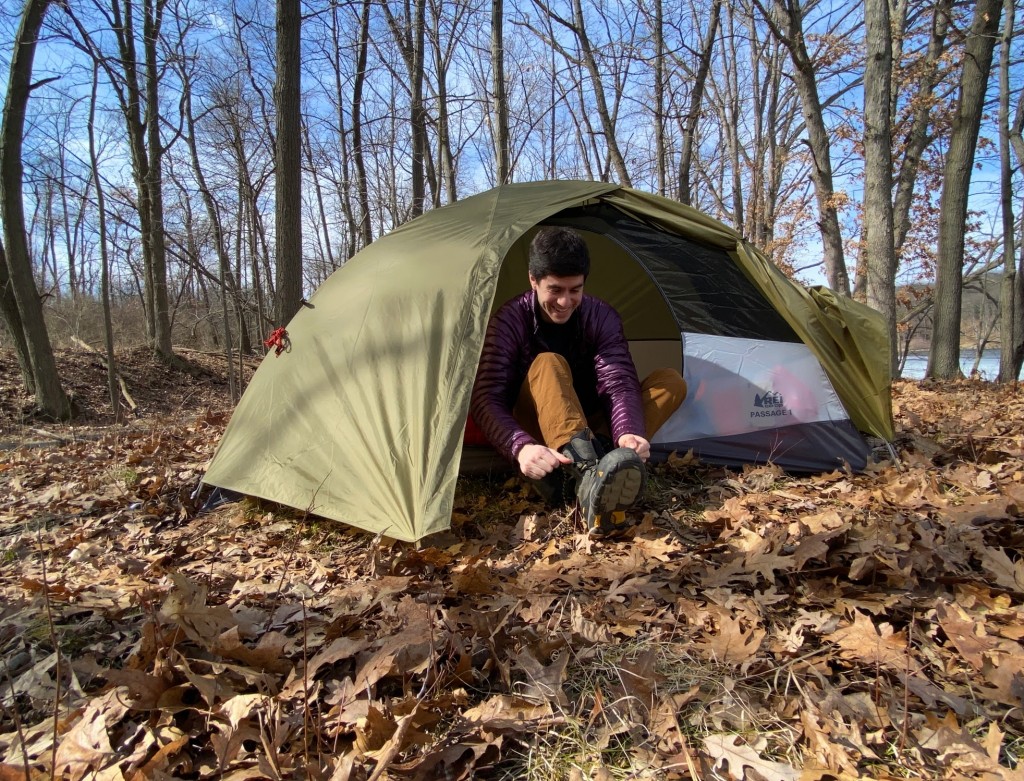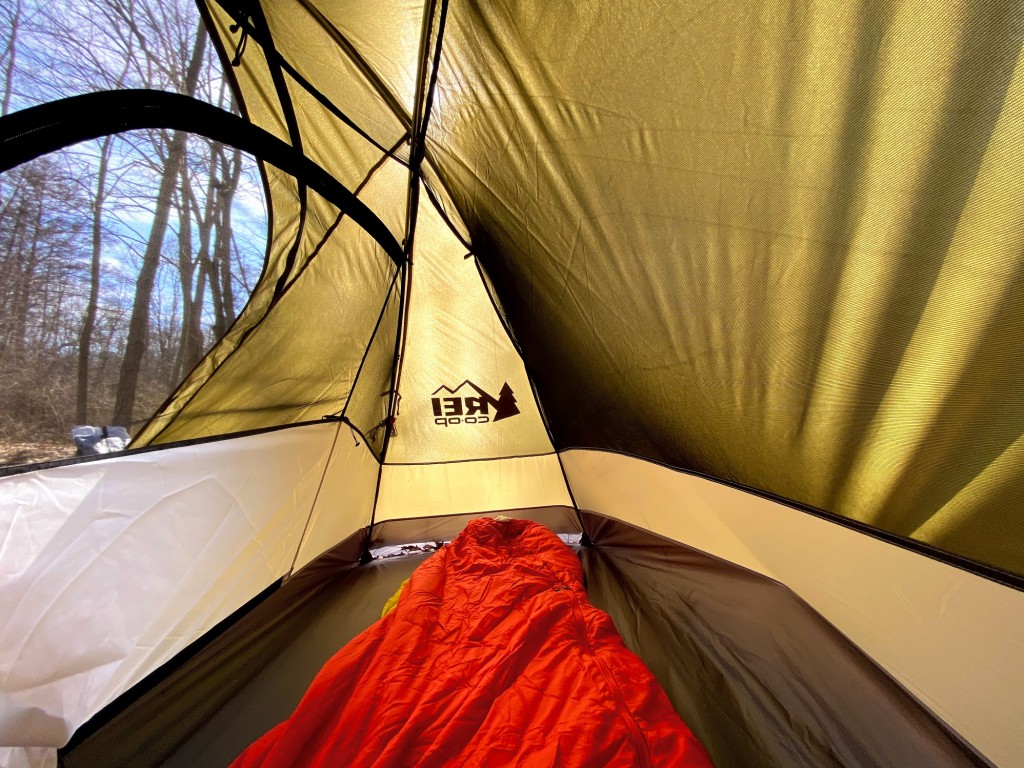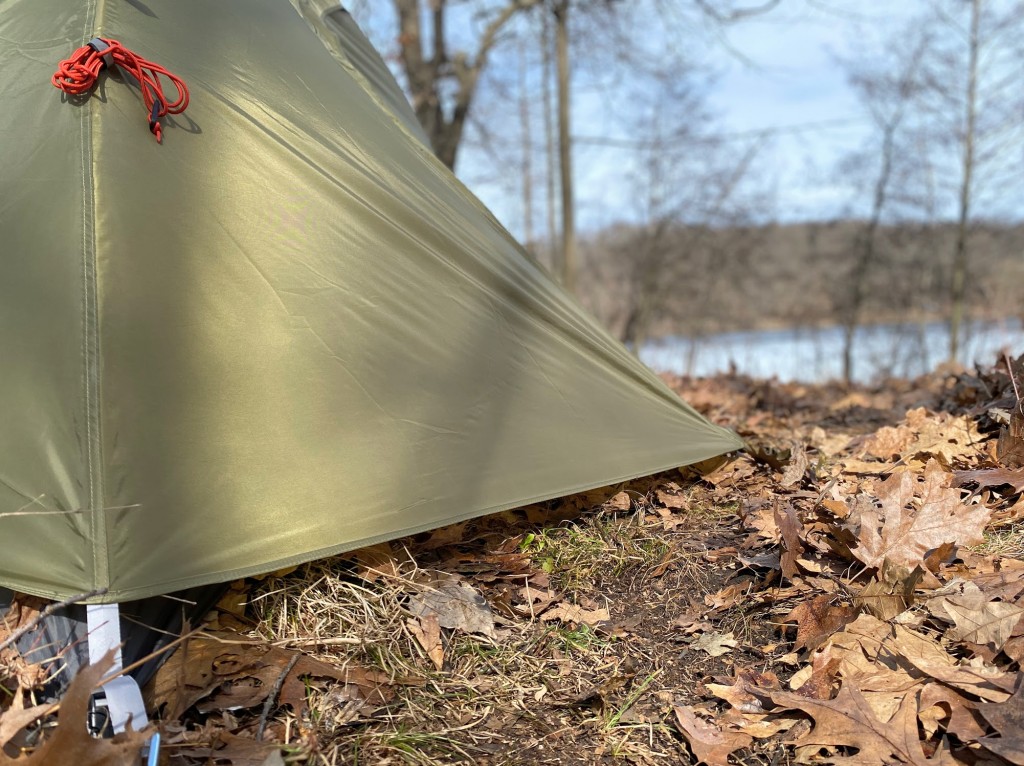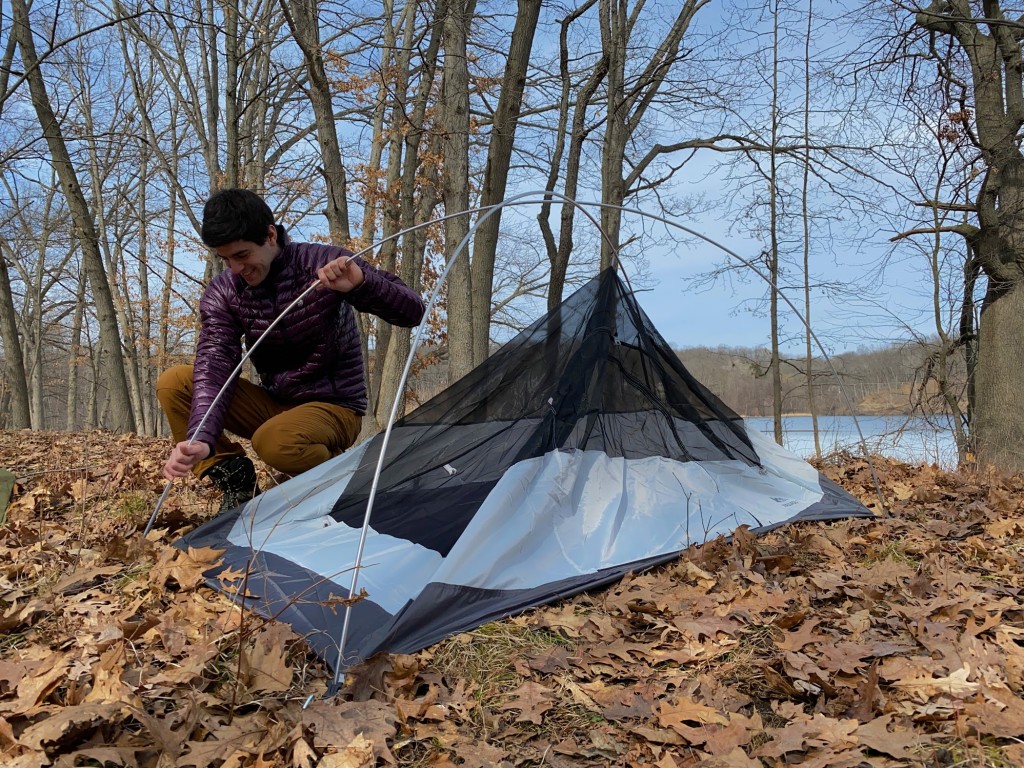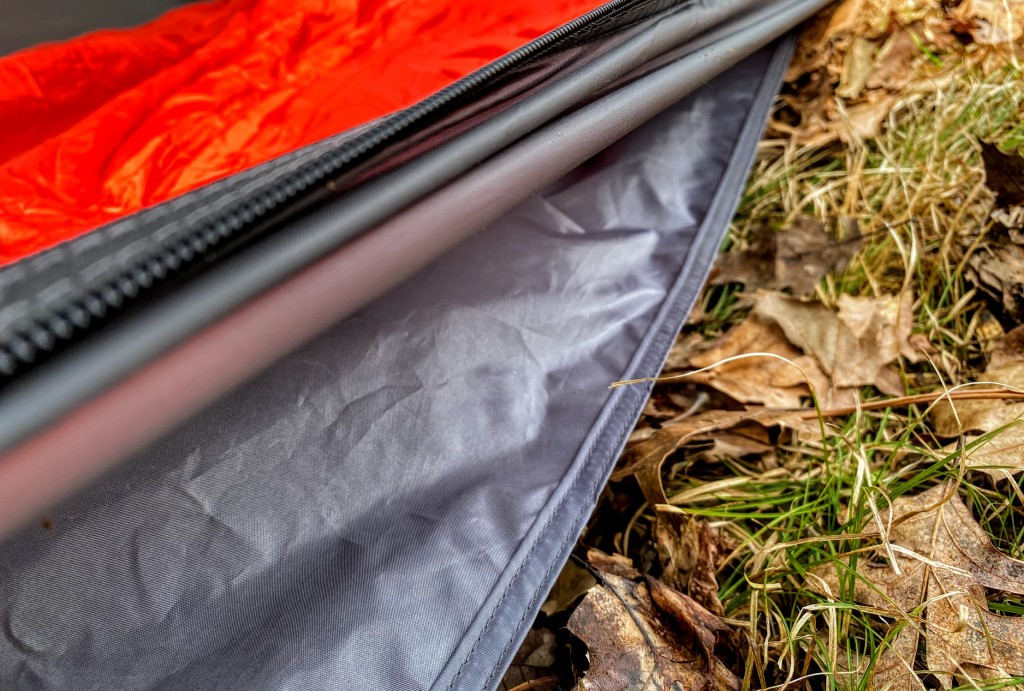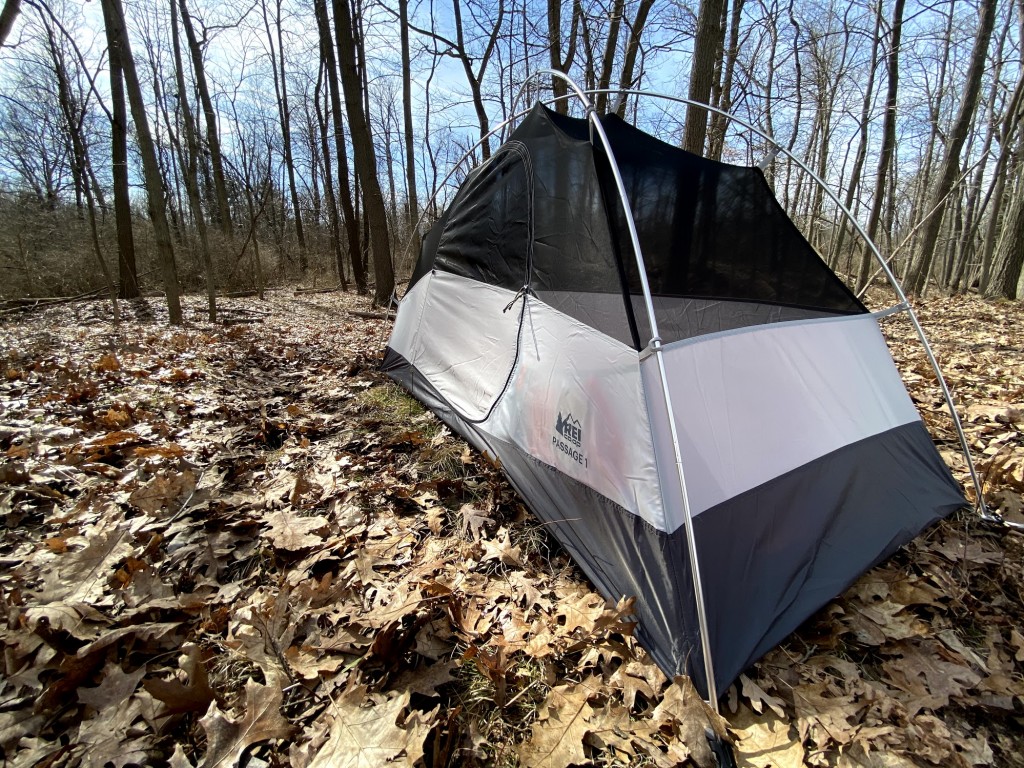REI Co-op Passage 1 Review
Our Verdict
Our Analysis and Test Results
This model is different from other one person models in that it preserves much of what makes its two person version great. It provides 40 inches of headroom at its peak height and has a large, 9.5 square foot vestibule, which makes it possible to keep your gear outside of the tent but still protected from the elements.
Performance Comparison
Comfort
As far as one person tents go, this one offers quite a bit more than average. Its 36" width is more than enough for a standard 20 inch sleeping pad, and its 88 inch length and steeper head and foot walls ensure there is enough room for a six foot sleeper. The big payoff for this tent is its peak height. Typically the move from 2P to 1P versions means a drastic reduction in this critical dimension, but in this case, it is only marginally lower than the 2P and considerably higher than the peak height of many other 1Ps. On trail, it provided ample room for us to sit up completely without our heads touching the top or having to hunch over.
The large D-shaped door rolls up and can easily be secured in an open position if the bugs have gone to bed before you. This tent comes with a single side pocket by the head. It is large enough; we could easily fit a journal, headlamp, bandana, phone, and gloves with room to spare. The fabric is opaque, which makes it possible to use as a light diffuser for a headlamp if you want to read at night without the glaring beam shining in your face at full force. And if you need more space for boots and a pack, the vestibule can keep the gross stuff out of the tent, but still protected from the elements.
The mesh canopy makes for a solid stargazing experience, while the relatively high privacy panels offer at least the illusion of alone time, even if you keep the fly off at a crowded campsite.
Weather Resistance
The weather resistance of this model isn't superb, but it is buoyed by a solid vestibule that runs low to the ground and stakes out far away from the tent body. The bathtub floor mitigates the effects of splashback from the ground onto the tent. In total, the design sets you up for success when the skies open up. We also like the air vent at the top, and the ability to unzip a little bit of the fly door without having to leave everything completely exposed.
The flipside of having that lofty peak height is that positioning the tent at a campsite is increasingly important, especially in windy conditions. We recommend trying your best to angle it in such a way that the tent is pitched with the narrow end facing the wind so that it isn't getting broadsided all night. It's much more modest than the vestibule side, but we also appreciate the clearance the fly provides on the opposite side as well. There is even a clip on the tent that attaches to fly, pulling the wall away from the sleeper (and avoids getting their sleeping bad wet).
Ease of Setup
The Passage 1 is about as easy as it gets to pitch a freestanding tent. Like its two person counterpart, it comes with a basic X-pole design; two long poles each secure into grommets at diagonal corners. A handful of hooks clip into place to volume out the tent, and the fly clips in at the corners. One slightly annoying feature of the setup is that since there is no horizontal support pole, tensioning the fly too much can pinch the two poles together, creating a little bit of sag in the canopy; it just requires a little more attention.
If you are flying solo, this tent is one of the best budget options if you need to set up fast in the rain. As would be expected with a tent at this price point, it comes with basic hook stakes. They'll bend out of shape eventually, but they're certainly not the cheapest ones that we have come across. The takedown is equally simple. We think after the second or third time around, one person could set up this tent in just a few minutes.
Durability
With reasonable care, the Passage 1 should last a long time. The aluminum pole segments don't inspire the most confidence in terms of their strength, but together, they seem to be better equipped to bear the stresses of the rest of the tent. The coated polyester main body and fly are burly enough to withstand the typical rigors of a tent site. In addition, this tent comes equipped with a footprint (included!) that adds both extra protection from a soggy ground as well as longevity, protecting the tent from pine needles and pebbles.
The plastic pieces seem like they belong on a budget tent, but they are sturdy enough to withstand being accidentally stepped on a time or two. There's no plastic connector hub on the poles, just a big old plastic hook. We see this as a positive since that style of hub found on many other tents (budget and non-budget alike) tends to be one of the first pieces to snap. This model also comes with a pole sleeve that allows you to do a field repair in the event that one of the poles snaps.
Weight
At a little over four pounds, the Passage 1 certainly isn't breaking any ultralight records. However, if you do primarily camp alone, it offers weight savings of almost a pound and a half over its 2P counterpart.
It's marginally heavier than other budget 1Ps, but with this category of tent, we don't think it is as much of an issue.
Packed Size
The Passage 1 is a bulky 7.5"x17" and is noticeably larger in the bag than other models, but that makes sense, given how much more space it provides a sleeper when it's pitched.
Although it's heavy and bulky, at the end of the day, that's what you get with any budget tent. So in practice, it's not such a big deal. We would gladly carry the extra few ounces of this tent for its comfort.
Should You Buy the REI Passage 1?
The REI Passage 1 offers a solid night's sleep for a solo camper. Its headroom makes it a great option for taller folks, and it comes with the same materials basic design elements as its larger sibling. Its interior headroom and vestibule make for good livability, while its straightforward design means setup takes just a couple of minutes. We recommend this tent for anyone looking for an excellent but inexpensive one-person option.
What Other Budget Backpacking Tents Should You Consider?
For even more space, including tons of extra headroom, the The North Face Stormbreak 2 is one of our favorites overall. And if budget is the name of the game, then the Bisinna 2 is a fraction of the cost with performance above its price point.


